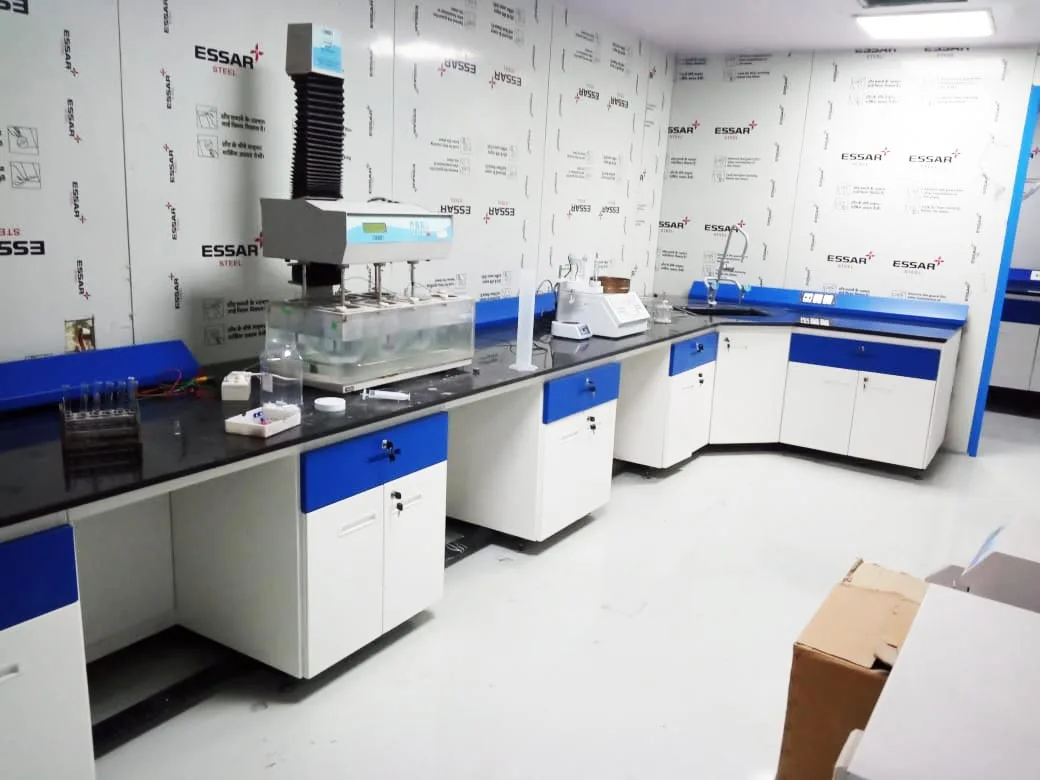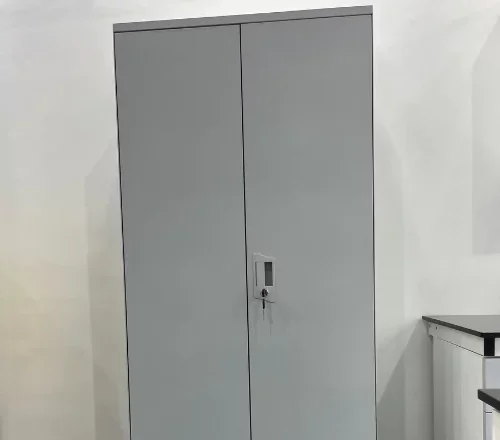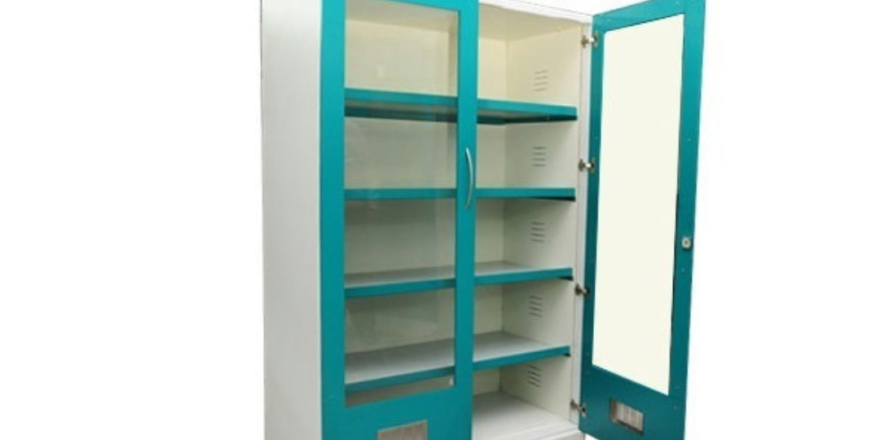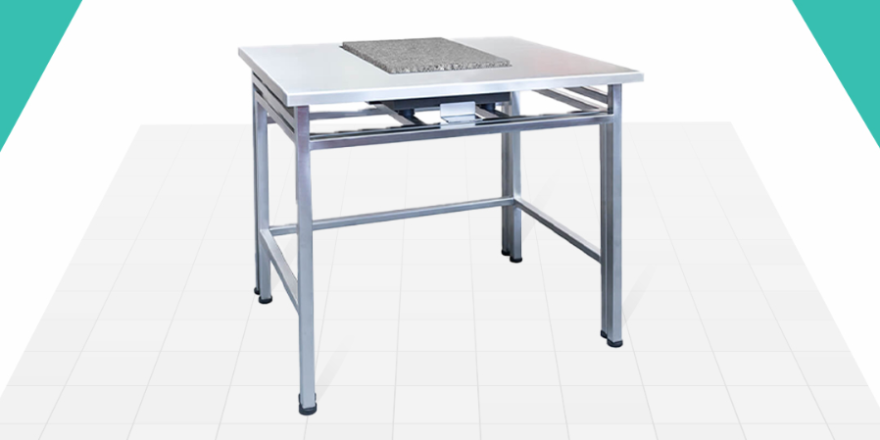Laboratories are dynamic spaces that require specialised furniture to facilitate efficient and safe scientific research and experimentation. The right laboratory furniture enhances productivity, organisation, and safety. In this guide, we will explore various types of laboratory furniture and their functions, helping you make informed decisions when setting up or renovating your laboratory.
I. Laboratory Workbenches
For researchers and scientists, laboratory workbenches are their main workspace. They are made to offer a stable and practical surface for conducting experiments, analysing materials, and using lab equipment. Here are a few popular kinds of lab workbenches:
Standard Workbenches
Standard workbenches are versatile and suitable for various laboratory applications. They typically feature a durable work surface and storage options such as shelves or drawers.
Adjustable Height Workbenches
These workbenches offer the flexibility to adjust the height of the work face, allowing researchers to work in a comfortable and ergonomically sound position. They’re particularly beneficial for individuals who spend long hours in the lab.
Chemical Resistant Workbenches
Chemical-resistant workbenches are designed to withstand exposure to corrosive substances. They feature chemical-resistant surfaces and materials, providing a safe and durable workspace for handling chemicals and acids.
II. Laboratory Cabinets And Storage Solutions
Proper storage is crucial in a laboratory to maintain organisation, ensure the integrity of samples and equipment, and improve safety. Let’s explore different types of laboratory cabinets and storage solutions:
Safety Cabinets
Safety closets are essential for storing hazardous chemicals, flammable substances, and other materials with redundant protection. They’re designed to prevent the accidental release of dangerous substances and point to specialised ventilation systems, incombustible construction, and safety locks.
Glassware Storage Closets
Glassware storage closets are designed to store fragile laboratory glassware, like beakers, flasks, and test tubes. They’ve adjustable shelves, racks, and chambers to maximise storage capacity while minimising the threat of breakage.
File Cabinets
File cabinets are used to store laboratory records, research data, and other important documents. They come in various sizes and configurations, including vertical and lateral options, offering efficient organisation and easy access to information.
III. Laboratory Fume Hoods
Fume hoods are critical components of laboratory safety infrastructure. They protect researchers from inhaling toxic fumes, gases, and harmful particulates by drawing air away from the workspace. Here are different types of fume hoods commonly used in laboratories:
Ducted Fume Hoods
Ducted fume hoods are connected to an exhaust system, which expels hazardous fumes outside the laboratory. They are highly effective in removing toxic substances but require proper installation and maintenance of the ventilation system.
Ductless Fume Hoods
Ductless fume hoods utilise filtration systems to remove and neutralise contaminants before recirculating the air back into the laboratory. They are more flexible in installation and can easily relocate within the lab.
IV. Laboratory Chairs And Seating
Comfortable seating is essential for laboratory personnel who spend extended periods working at laboratory benches or conducting experiments. Here are some types of laboratory chairs commonly used:
Ergonomic Chairs
Ergonomic chairs are created to provide the right support and encourage correct posture, which lowers the risk of musculoskeletal illnesses. To ensure maximum comfort and reduce strain, they frequently have backrests, armrests, and lumbar support that may be adjusted in height.
Cleanroom Chairs
Cleanroom chairs are used in controlled environments where maintaining sterility is critical. These chairs are made from materials that are easy to clean, and they often feature anti-static properties and smooth surfaces to prevent the accumulation of contaminants.
V. Laboratory Shelving Systems
Efficient storage solutions are vital in laboratories to maintain organisation and accessibility. Shelving systems are commonly used to store equipment, supplies, and samples. Let’s explore different types of laboratory shelving systems:
Open Shelving
Open shelving units provide easy access to stored items and are ideal for frequently used equipment or supplies. They are typically made of sturdy materials like stainless steel or coated wire, ensuring durability and resistance to corrosion.
Closed Shelving
Closed shelving units feature doors or panels to protect sensitive or hazardous materials from exposure. They provide added security and maintain the integrity of stored items by shielding them from dust, light, or temperature fluctuations.
Mobile Shelving
Mobile shelving systems maximise storage capacity by utilising space more efficiently. They consist of shelves mounted on tracks, allowing them to be compacted or expanded as needed. Mobile shelving is particularly beneficial in laboratories with limited space.
VI. Laboratory Sinks And Fixtures
Laboratory sinks and fixtures are essential for various tasks, including sample preparation, washing equipment, and waste disposal. Here are some common types of laboratory sinks and fixtures:
Undermount Sinks
Undermount sinks are mounted beneath the laboratory countertop, providing a sleek and seamless appearance. They are easy to clean and maintain, as there are no crevices or edges where dirt or contaminants can accumulate.
Eye Wash Stations
Eye wash stations are critical for laboratory safety, providing immediate irrigation in case of chemical splashes or eye injuries. They typically consist of a sink or basin with specialised nozzles that deliver a gentle water flow to the eyes.
VII. Laboratory Carts And Trolleys
Laboratory carts and trolleys offer mobility and convenience, allowing researchers to transport equipment, samples, and supplies within the laboratory. Here are different types of laboratory carts and trolleys:
Utility Carts
Utility carts are versatile and can be used for various purposes, such as transporting equipment, storing supplies, or serving as temporary workstations. They often feature multiple shelves, handles, and swivel casters for easy manoeuvrability.
Instrument Carts
Instrument carts are designed to safely transport delicate laboratory instruments, such as microscopes or centrifuges. They often have adjustable compartments or holders to secure equipment during transportation.
Chemical Carts
Chemical carts are specifically designed to safely transport hazardous chemicals or reagents within the laboratory. They have spill-proof trays, lockable drawers or cabinets, and sturdy construction to prevent accidents and ensure chemical containment.
Bottom Line
Selecting the appropriate laboratory furniture is crucial for creating a functional and safe working environment. Considering such factors can meet your laboratory requirements. Investing in high-quality laboratory furniture or hiring a professional lab furniture manufacturer enhances productivity and organisation. It contributes to the overall efficiency and success of scientific research and experimentation.




